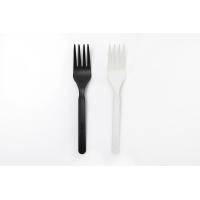Pla eco-friendly disposable tableware plate food container
biodegradable sugarcane bagasse tableware


Company Profile
Guangzhou Bio Technology Co., Ltd. is a packaging material supplier
that integrates product development, design, and production,
providing customers with a complete set of packaging material
solutions. The main product category is degradable Disposable
tableware. Our company has two modern, clean and dust-free
production factories covering an area of 20000 square meters. For a
long time, we have customized packaging products for chain
supermarkets and catering companies in the United States, Canada,
Australia, etc., providing high-quality products and excellent
services has always been the purpose of our cooperative customers!
At the same time, we implement a comprehensive quality management
system with the goal of "stable quality and compliance with
international standards" for production management. To this end, we
have passed ISO9001 international quality management system,
ISO14001 international environmental management system, China QS
food industry product license, GB/T 38082-2020 biodegradable
shopping bag testing, GB/T 18006.3-2020 disposable degradable
dining utensils testing, BPI, FDA, EN13432 and other tests, To
safeguard the development of the company.
Production Process of PLA (Polylactic Acid)
1. Raw Material Sourcing:
Starch Extraction: Raw materials such as corn or sugarcane are
harvested, and starch is extracted. For corn, this involves milling
and enzymatic processes to convert starch into glucose.
2. Fermentation:
Lactic Acid Production: The glucose obtained from starch is
fermented using specific microorganisms (usually Lactobacillus
bacteria) to produce lactic acid. This fermentation process can
take several hours to days.
3. Purification:
Lactic Acid Purification: The lactic acid produced is then purified
to remove impurities and unreacted materials, ensuring high purity
levels for further processing.
4. Polymerization:
Lactide Formation: The purified lactic acid is heated to form
lactide, a cyclic dimer of lactic acid. This step often involves a
condensation reaction where water is removed.
Ring-Opening Polymerization: The lactide is subjected to
ring-opening polymerization in the presence of a catalyst to
produce PLA. This process can occur in bulk, solution, or melt
form.
5. Granulation:
Pellet Production: The resulting PLA is cooled and granulated into
small pellets, making it easier to handle and process in subsequent
manufacturing stages.
6. Processing:
Molding and Extrusion: The PLA pellets can be processed using
techniques such as injection molding, extrusion, or 3D printing to
create various products, including containers, films, and fibers.
7. Quality Control:
Testing: Finished PLA products undergo quality control tests to
ensure they meet required specifications, including mechanical
properties, biodegradability, and safety standards.












